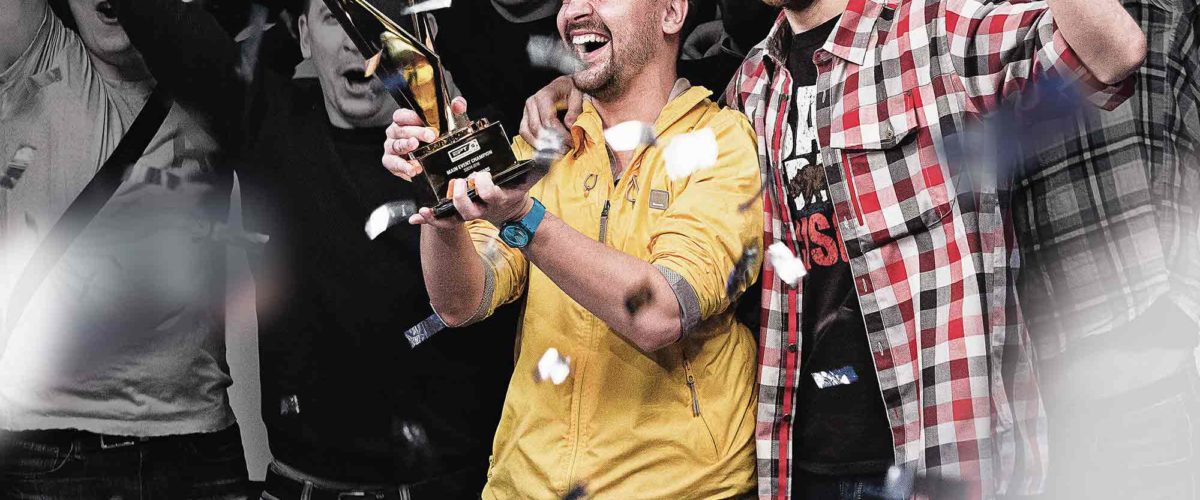How to Survive and Win a Huge Poker Tournament (Part 2)
In Part 1 of this series, we looked at how you should approach the early stages of a huge poker tournament and then how you can navigate through the tricky middle stages to make a deep run. If you missed it, click here to check out the article now. Now we are going to look at how to approach the money bubble and then – hopefully – go on to win the tournament!
The Bubble
As with most situations in poker, it’s just as important to be aware of what your opponents are doing on the bubble as what you are doing. In a huge field tournament you will have been playing for hours (or maybe even days in a live event) to get to the bubble stage. For many players, this will be a large emotional investment and, after spending so much time and energy, the prospect of busting without making the money is unthinkable.
There are two things to do here; the first is to avoid this mindset yourself. Of course cashing is nice but the main reason to play big tournaments is to try and make it to the final table and go on to win. That’s where the huge prizes are. If you play super tight and allow yourself to be run over on the bubble then you will often cash, but be so short in chips that you deny yourself the opportunity of going much further. So, the second thing to do is exploit players who are thinking in this manner. If you see a player folding too many hands (as perhaps you used to do) then make sure you try to steal their blinds every single time! They will only play back at you with a monster so your decisions will be easy. Even if you see a flop you can rest assured that they will fold their hand by the river if it’s not very strong – assuming you have the chips to do so put pressure on them and watch them fold over and over again.

The period leading up to and around the bubble is often tense and filled with tight play. However, as soon as that bubble breaks get ready for carnage! All of those sub-10 big blind stacks that were desperately clinging on to make the cash are now all too happy to ship their chips into the middle and gamble it up to build a stack. This can be yet another chip-making opportunity for you if you are paying attention. You should lower your standards for calling these shoves. Let’s say you face a jam for 9BBs the very first hand after the bubble breaks; I’d now want to be calling with pairs 44+, K-9+, A-7+ and even hands like Q-J suited. This is a significantly looser range than if you were at a ‘normal’ stage of the tournament, and reflects how loose and crazy the play often is directly after the bubble. Score a few of these knockouts and suddenly you could rise from a medium stack to one of the leaders, setting you up for a sprint to the final table.
Taking it Down
By this point you’ve outlasted hundreds, or even thousands, of other players and the finishing line is in sight. It feels as though you have done all of the hard work already but nothing could be further from the truth. Every decision that you make in the late stages is much more crucial than any you will have made previously – because the stakes are so much higher. Think of it this way; on the bubble you are going to double your money at best if you get a min-cash. Yet if you go on to win the tournament you can win your initial buy-in many hundreds of times over! At this stage, it’s more important than ever to pay attention to every last detail in the tournament. If you are down to just a few tables it’s a good idea to open up the other tables in the PokerStars client and keep an eye on how the other players are playing. This extra information could come in crucial on the final table.
A new variable to contend with is that the tournament will stop being full ring the later it goes, and there’s a big difference between playing 9-handed poker and, say, 5-handed poker. As you approach the final table the tables will be balanced out automatically by the software to ensure that it’s fair for all players. This could mean you end up playing short-handed – if that’s the case then you have to adjust your game. The main adjustment to make is that you must play looser and more aggressive the fewer players there are. With less players to play against the average hand strength is going to reduce significantly, so whereas a hand like 9-9 might be decent with 8 players, it suddenly becomes a monster with just 4 players. This concept is obviously especially important on the final table where you will be playing with a different number of opponents every time one gets eliminated.
Use the tactics and approach suggested in these two articles and you’ll have a good chance of running deep but from there it’s really up to you. Good luck!

